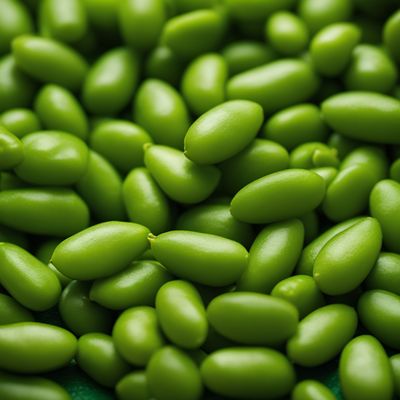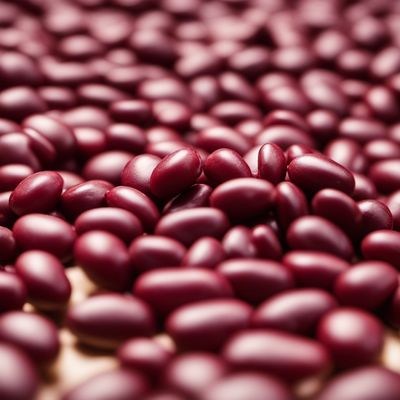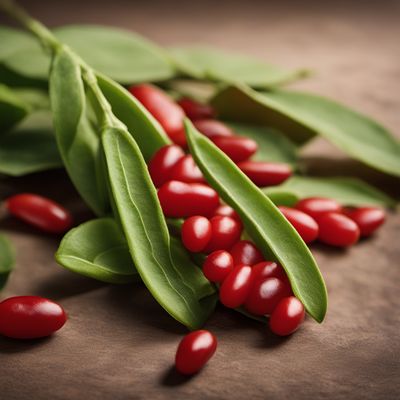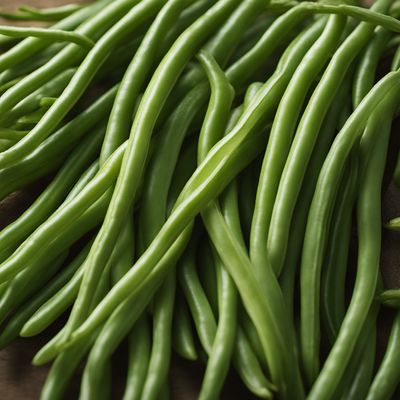
Ingredient
Mat bean (fresh seeds)
The Mighty Mat Bean: A Nutritional Powerhouse
Mat beans are small, oval-shaped legumes with a creamy white color and a slightly nutty taste. They have a tender yet firm texture, making them ideal for adding substance to soups, stews, and curries. Mat beans are rich in protein, fiber, and essential minerals like iron and manganese, making them a nutritious addition to any diet.
Origins and history
Mat beans have been cultivated in India for centuries and are an integral part of the country's culinary heritage. They are believed to have originated in the arid regions of Central India and have been traditionally used in various regional dishes. Mat beans are also popular in other South Asian countries like Pakistan and Bangladesh.
Nutritional information
Mat beans are a good source of protein, fiber, iron, and manganese. They are low in fat and calories, making them a healthy choice for those looking to maintain a balanced diet. A 100-gram serving of cooked mat beans provides approximately 160 calories, 9 grams of protein, 6 grams of fiber, and various vitamins and minerals.
Allergens
Mat beans are not known to be allergenic, but individuals with legume allergies should exercise caution when consuming them.
How to select
When selecting mat beans, look for fresh seeds that are plump, uniform in size, and free from any signs of mold or damage. Avoid beans that appear shriveled or discolored. If purchasing from a farmers market, ask the vendor about the freshness of the beans and their cultivation practices.
Storage recommendations
To maintain the freshness and quality of mat beans, store them in an airtight container in a cool, dry place. They can be kept at room temperature for up to 6 months, but for longer shelf life, store them in the refrigerator or freezer. Proper storage helps retain their flavor and nutritional value.
How to produce
Mat beans can be grown in home gardens or small-scale farms. They require warm weather and well-drained soil. Sow the seeds directly in the ground or in containers, ensuring they receive adequate sunlight and water. Harvest the pods when they turn brown and dry, then remove the seeds for consumption or storage.
Preparation tips
Mat beans can be cooked by soaking them overnight and then boiling them until tender. They can be used in a variety of dishes, including curries, stews, soups, and salads. Mat beans can also be sprouted and used in sandwiches or added to stir-fries for a crunchy texture. To enhance their flavor, consider seasoning them with spices like cumin, coriander, or turmeric.
Culinary uses
Mat beans are commonly used in Indian cuisine, where they are added to curries, dals (lentil soups), and salads. They can also be used as a filling in savory pastries or stuffed flatbreads. Mat beans are a versatile ingredient that can be incorporated into both vegetarian and non-vegetarian dishes.
Availability
Mat beans are primarily cultivated and consumed in India, particularly in the states of Maharashtra, Gujarat, and Madhya Pradesh. They are also grown in other South Asian countries like Pakistan and Bangladesh.
More ingredients from this category » Browse all

Monantha vetches (without pods)
The Versatile Monantha Vetches

Lima beans (without pods)
The Versatile Lima Bean

Broad beans (without pods)
The Versatile Legume

Soyabeans (without pods)
The Mighty Bean: Unleashing the Power of Soyabeans

Azuki beans (without pods)
The Versatile Azuki Beans

Runner beans (without pods)
The Vibrant Green Delight: Unveiling the World of Runner Beans

Ervils (without pods)
Delicate Green Gems

Black gram (fresh seeds)
The Nutritional Powerhouse: Fresh Black Gram Seeds

Yardlong beans (without pods)
The Versatile Legume

Borlotti or other common beans (without pods)
The Versatile Legume: Borlotti Beans

Rice beans (without pods)
The Versatile Rice Bean

Stink beans (without pods)
The Pungent Delicacy: Stink Beans Unleashed